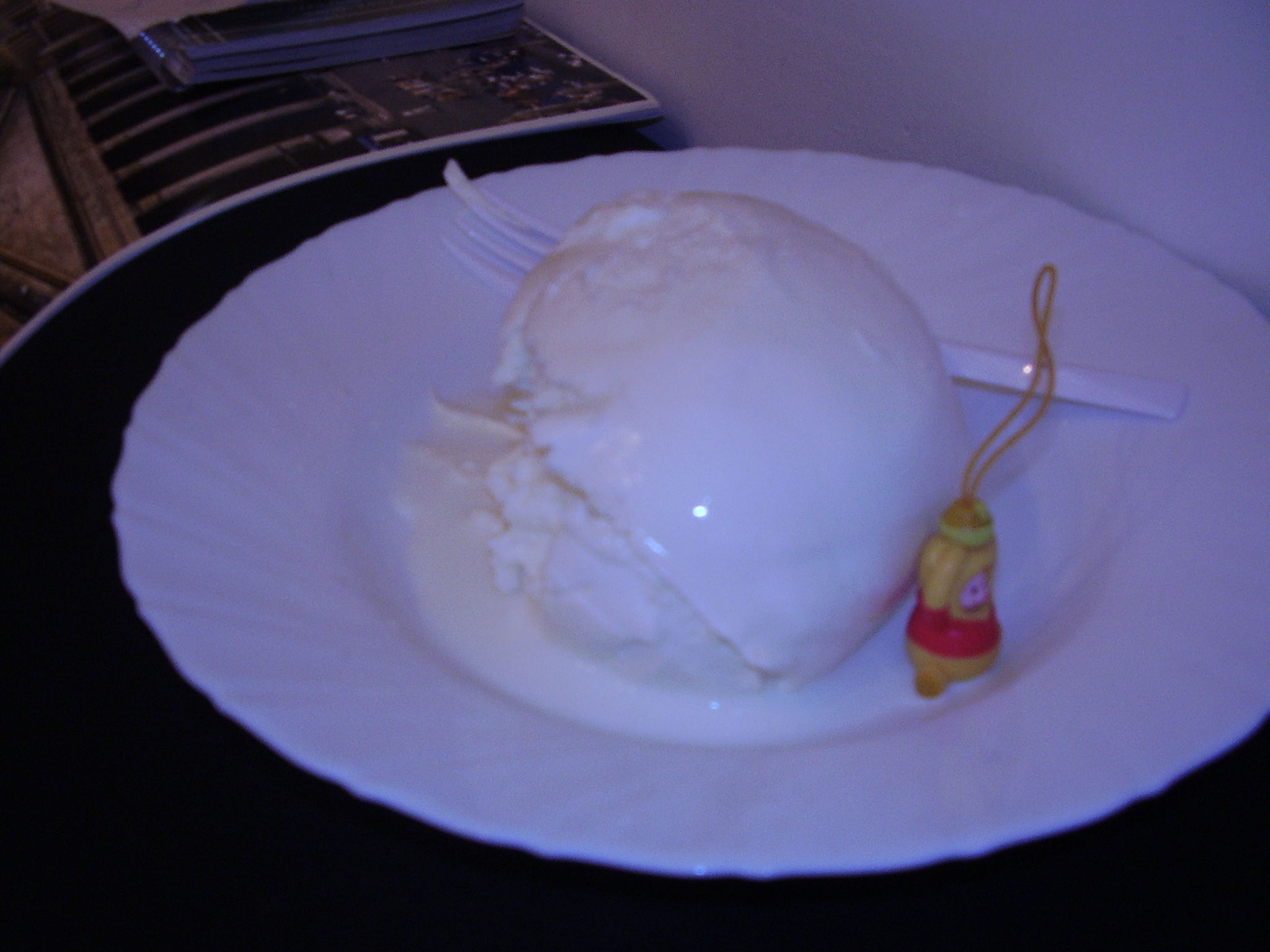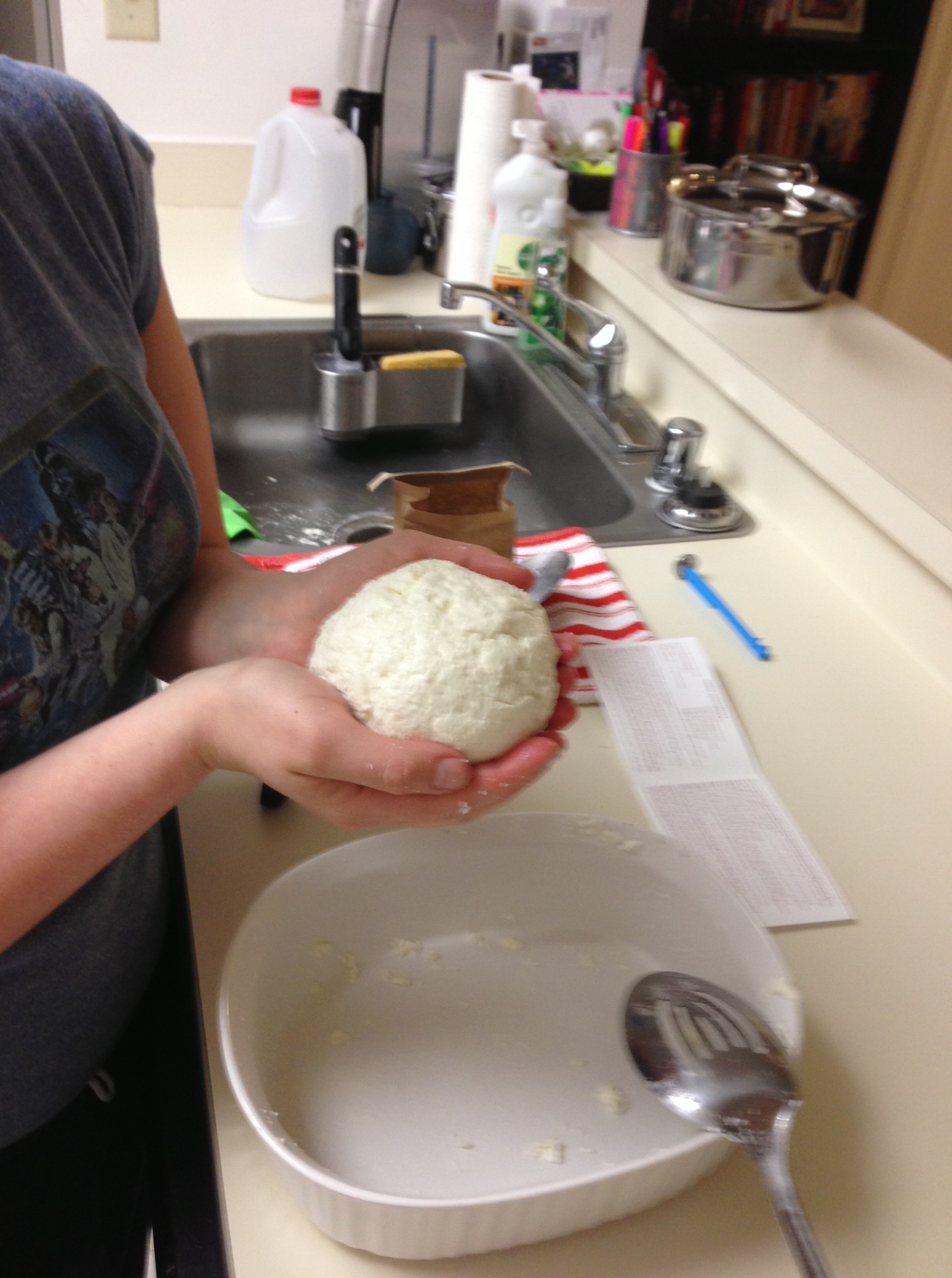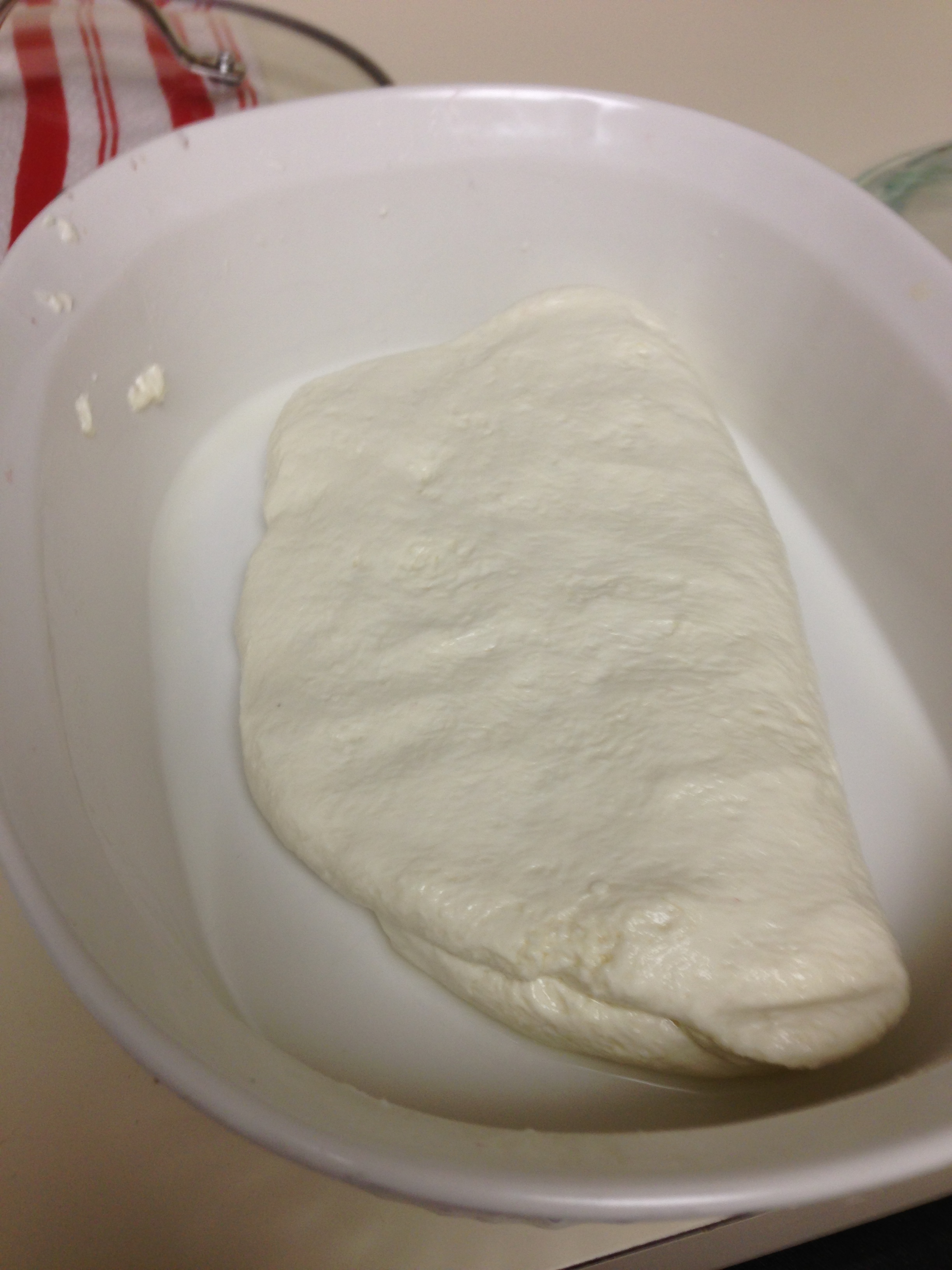The post Make Your Own Mozzarella appeared first on Cooking is Messy.
]]>Ryan and I have been crazy about mozzarella since we studied abroad in Rome (we were there at different times). What’s crazy fancy and expensive here in the states is all over the place (and not expensive) in Italy. My roommate and I would buy huge balls of mozzarella at the grocery store and then eat it with a fork as an afterschool snack. It was creamy, gooey, salty, and terribly indulgent. Who just eats a ball of cheese for a snack? Answer, cheese lovers and twenty-year-old girls.
Anyway, the first time I thought about actually making cheese myself, in my own kitchen, with my own hands was after I read Barbara Kingsolver’s Animal, Vegetable, Miracle. I love this book and think pretty much everyone should read it. The book is about Kingsolver and her family’s decision to spend a year living in a rural area and they will only eat local foods or foods they produce. They do allow for some exceptions and the book is about their adventures, mishaps, and challenges. For story alone, it’s a book that’s funny, heartwarming, and captivating. If you’re in to seasonal, local foods and cooking this book is even better. There are great recipes broken up by season and they are so easy and delicious.
One of the recipes is for mozzarella, but the first time I read it I was intimidated. I’d have to order specific ingredients (rennet and citric acid) and I needed a stainless steel pot. I decided it was too much and too hard. But the idea didn’t leave that if I wanted to, I could do it at home.
So, a few weeks ago I was lusting after this and that on Williams-Sonoma’s website when I saw they had a ricotta-mozzarella cheese making kit for $25 that included everything I needed. I thought it would be fun for Ryan and I to try it, so I bought it! And then I read the instructions…
I had forgotten about the stainless steel pot! I told Ryan we couldn’t make the cheese yet because we needed a specific pot – because apparently aluminum and cast iron (the only pots we have!) can be reactive with the cheese.
Ryan asked, “Don’t we have a stainless steel pot?”
Me, “We did… but I donated it.”
Oops. Flash back to 8 months ago, we were getting married, moving, and had just gotten a great set of fancy, high-quality pots. We didn’t need our cheap old pots anymore, or so I though, so I donated them. Sigh, bad move.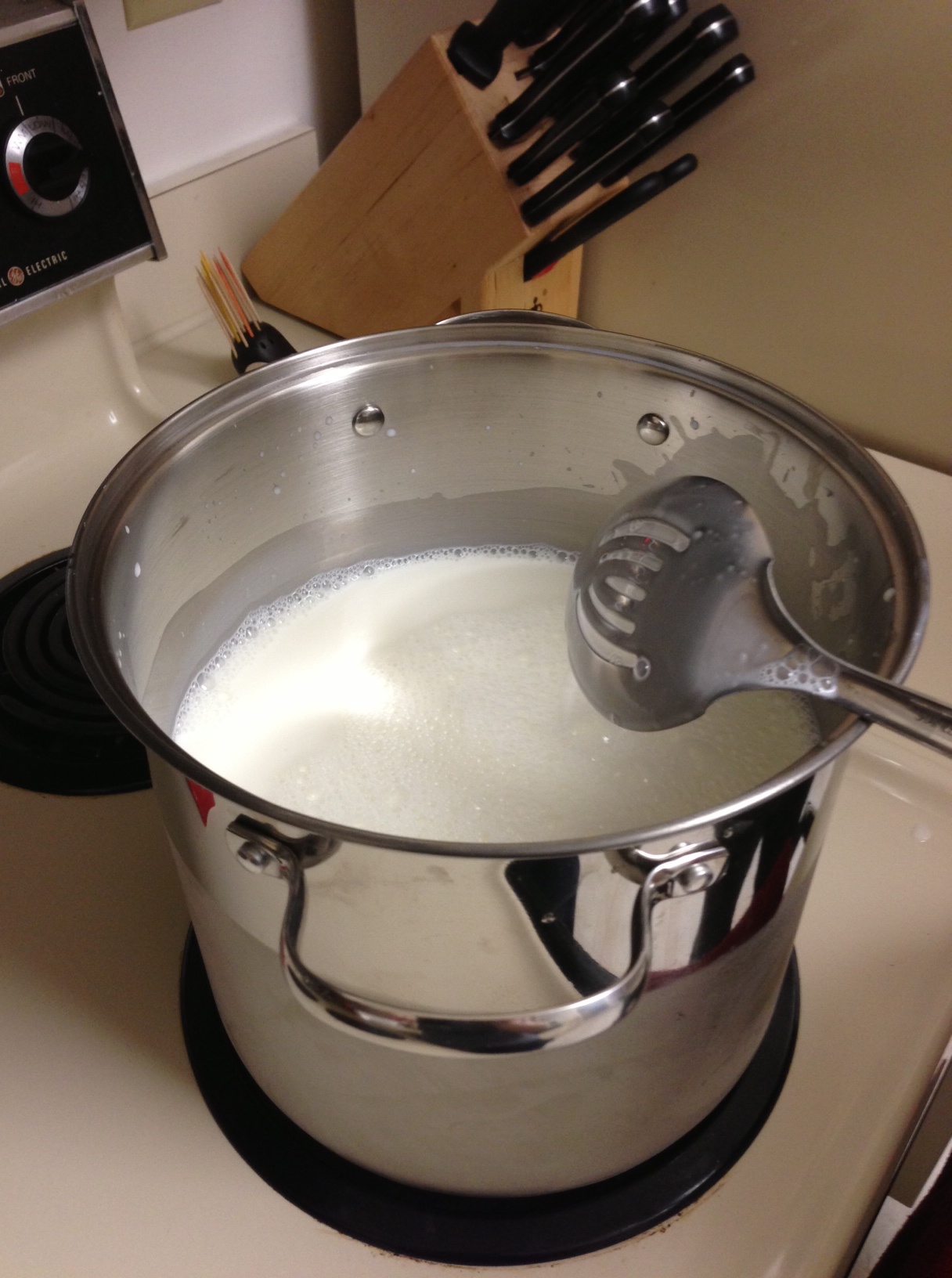
So then, I asked Ashley, my neighbor and friend, if I could borrow a pot from her. We bartered and I took her pot and she took my kitchen chairs – and I thought I was on my way. But no, the pot wasn’t big enough. I went to Target and bought a new cheap stainless steel pot that looks almost exactly the same as the old one. Now we were in business.
Before we started I asked Ryan if he thought it would come out well. He said no, and I had to agree. I didn’t think it was going to be mind blowing cheese either. And it wasn’t. But don’t get discouraged, I did eventually have cheesy success.
Making cheese is one of those things that takes practice. We were nervous and didn’t want to ruin it so we followed the provided recipe to the letter. And sometimes, reading it too closely causes anxiety. What does it mean when it says heat it and fold it as little as possible? Had we over worked it? Had we worked it enough? It didn’t look right, but should we work with it more? Is there a point where it’s irrevocably ruined? The first time, we just didn’t know.
Also, we didn’t know what it should look like or shouldn’t look like. It’s hard to know if you’re doing it right if you don’t know what doing it right looks like. The Williams-Sonoma kit directions were mostly fine and we were successful up until the point we had to work with the curds out of the pot. Our finished product ended up crumbly and a little lumpy. The texture was more like ricotta than mozzarella. Even though it tasted fine we were a bit disappointed. Ryan always tells me that we can’t expect it to be right the first time.
But I could tell that we were so close to doing it right. The next day I looked up the Animal, Vegetable, Miracle recipe and it was pretty similar to the Williams-Sonoma recipe, but it had more directions on what the cheese should look like and feel like at each step. As well, because I had done this wrong once before I was a little less gentle and a little more fearless this time. Finally, Barbara Kingsolver’s recipe is a little more encouraging, telling me to keep going, keep heating, keep folding, until I got it right.
And got it right I did. It became a smooth ball, with the right texture, and the right flavor. And it’s good cheese. I’ve been having it for lunch every day since. Be advised, the cheese is good but it’s not high-quality fancy imported good. It delightful and impressive to guests and should be made – but don’t give up yet on the store bought stuff.
Even so, Ryan and I are one tiny step closer to our cheese empire dream. We may never be international cheese mongers, but now at least we can share our creations with friends and family. And who knows, maybe we will come up with something new and exciting.
For the recipe below, I’ll try to right it as straightforward as possible but I warn you that it will be a little anecdotal. I want to tell you what we did at each step and how I think we did well or could have improved. This recipe is really a mix of Williams-Sonomas and Barbara Kingsolver’s. Blending the two is what I found worked best. Happy cheesing.
Ingredients:
Large stainless steel pot
Kitchen Thermometer
Non-wooden slotted spoon
~ 2 quart microwaveable bowl
1 ½ cups cool water
¼ tablet rennet (Barbara Kingsolver used ¼ tsp liquid rennet)
1 ½ tsp citric acid
1 gallon pasteurized whole milk (I’m told you can use 2% or whatever you like, but that it’s easier with whole. And DO NOT get ultra pasteurized milk because it won’t work)
1 ½ tsp cheese salt (more or less to taste)
Herbs (optional)
Directions:
- Pour ½ cup of the water into a small bowl. Dissolve the rennet tablet in the water
- Pour remaining 1 cup of the water into another small bowl. Dissolve the citric acid
- Pour the milk into a large pot. Heat on low-medium heat until it reaches 55°
- Pour in the citric acid solution. Stir occasionally with the slotted spoon.
- When the milk reaches between 88-90° slowly stir in the rennet solution. Use an up and down motion to stir this together. Stir for about 15-30 seconds.
- Heat until it reaches 105°. You should begin to see it curdle and the early formation of curds and whey. The curds are the white more solid looking pieces. The whey is the yellowish liquid. If the curds look like yogurt then gently stir the mixture for about a minute. If the curds look like clumps of melty cheese it’s time for the next step!
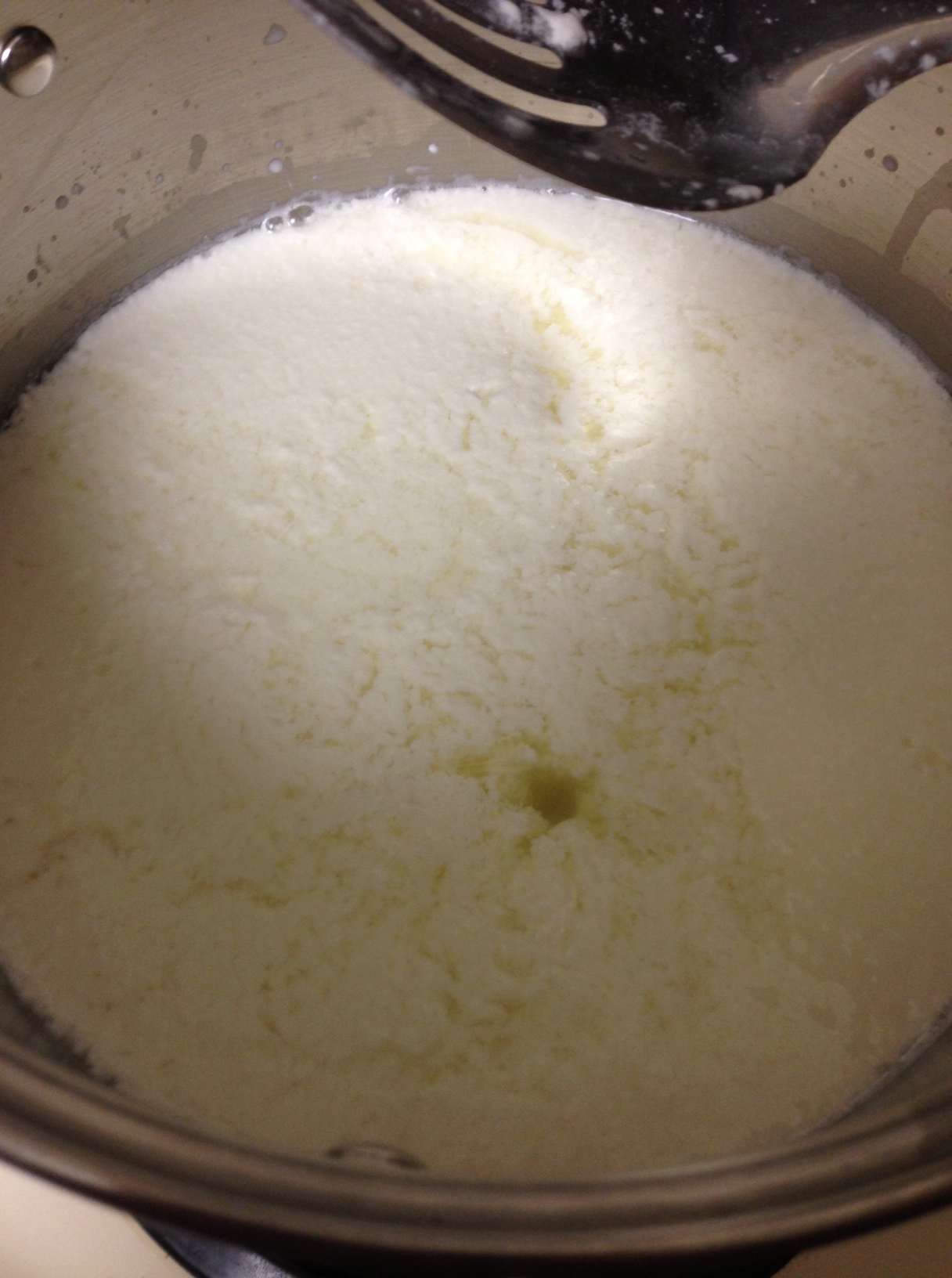
- Using the slotted spoon move the curds to the large bowl. Now the first time I did this, Ryan and I just used the slotted spoon to move the curds. It took forever, the curds were slippery, and a lot of whey was still in the bowl. Also because it took so long I think the temperature of the curds went too low and that led to our failure. The second time I did this, I used the slotted spoon to move the big pieces of curds. Then I used a fine mesh sieve and poured the contents of the pot through the sieve. The curds that got caught in the sieve I moved to the large bowl.
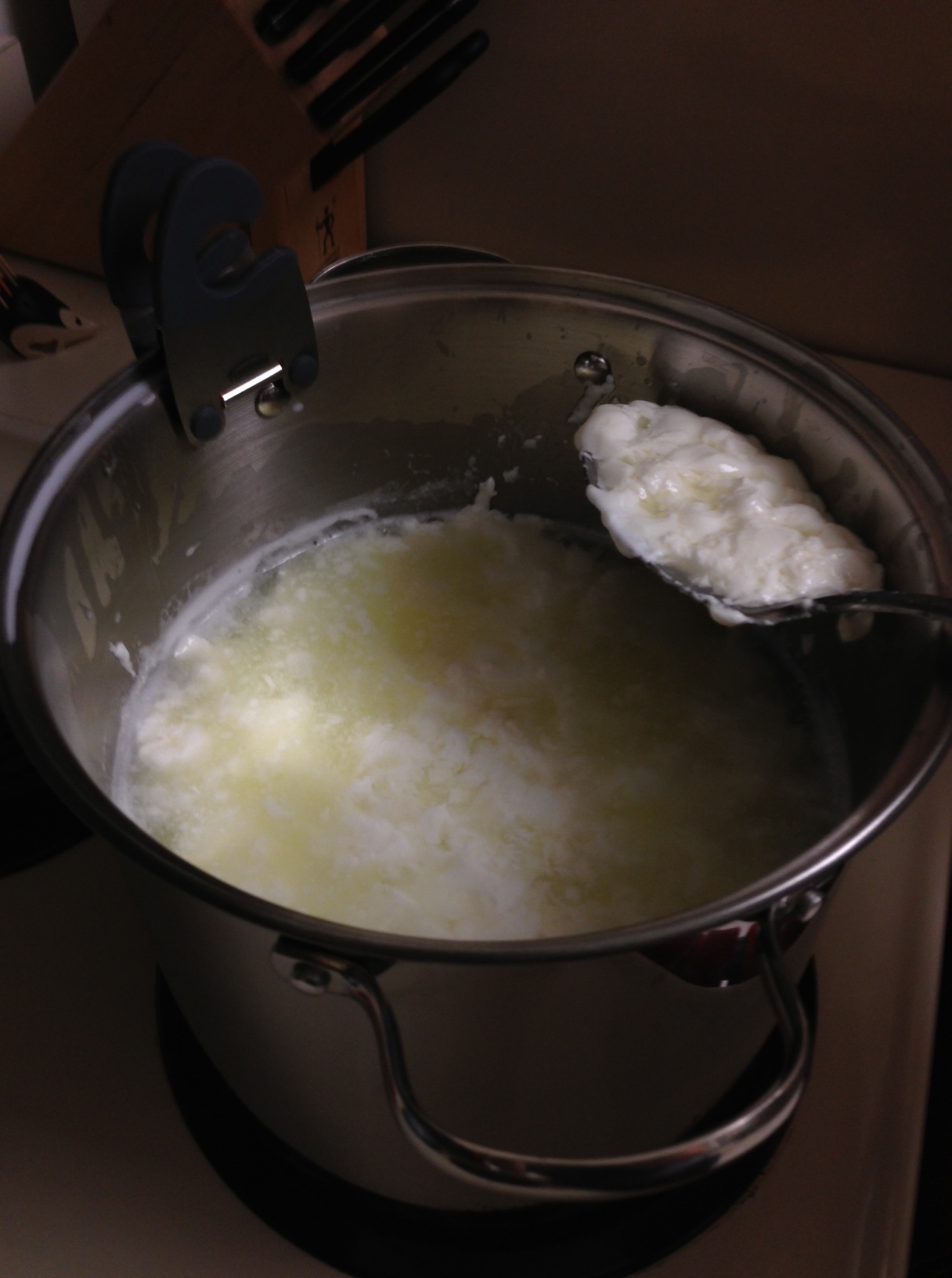
- Now there will likely be whey in your bowl. Gently press on the curds to squeeze out more whey. Pour out the extra whey so you have just curds. To do this, Ryan and I put a lid on the bowl and strained out the whey. Still, some stubborn whey was left behind. Then what I did was hold the curds back with my hand and tip the bowl over the sink and pour out the whey. This gave me greater success and flexibility because I was able to tip the bowl further and get more out.

- Microwave the curds on high for one minute. Note: There is a method of making cheese using the leftover whey, but I haven’t tried it so won’t be including that information
- Take the curds out of the microwave and knead the mixture. This should push out some more whey. You might want to do this with spoons or while wearing rubber gloves because it gets hot. I was a beast and did it barehanded. Yes, I am challenging you do be as awesome as me.
- Pour out any whey
- Microwave two more times for 35 seconds. After each microwave, knead the mixture and pour out excess whey.
- Add the salt and herbs if you are using them. Knead them into the mixture so they are spread throughout.
- Knead and pull the cheese until it’s smooth and elastic. It should be stretchy like taffy. If it’s not stretchy, and instead crumbly repeat step 12 until you can stretch it. Williams-Sonoma said the right temperature for this is 135°. Barbara Kingsolver said it was 175°. I found I was able to stretch at 135-140°. And this is the reason why making cheese well must take practice because you can’t always adhere doggedly to the directions, sometimes you have to go by what looks and feels right.
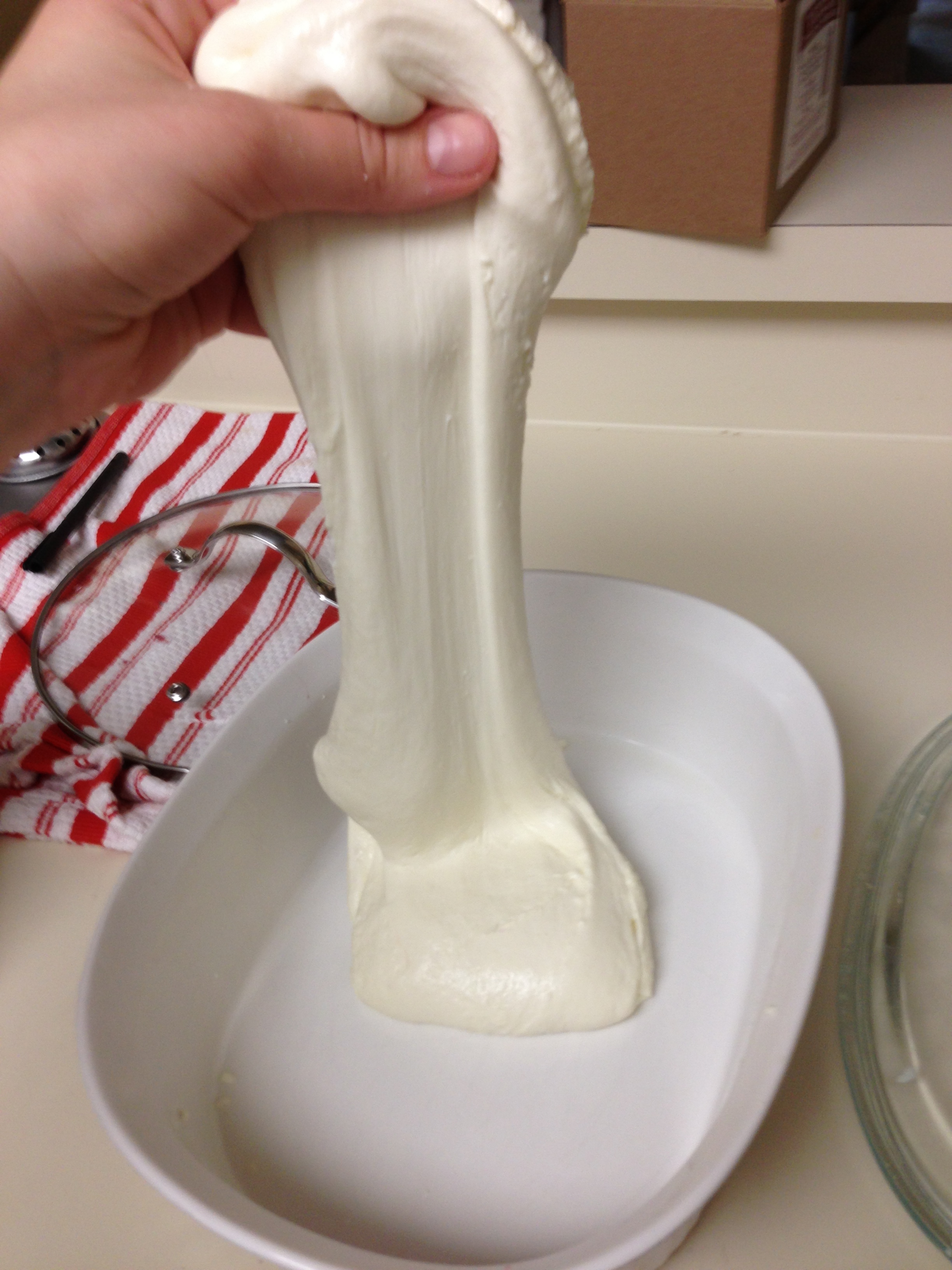
- Once the cheese is smooth and maybe a bit shiny roll it into one or more balls. You can eat it immediately or put it in the fridge for up to a week!
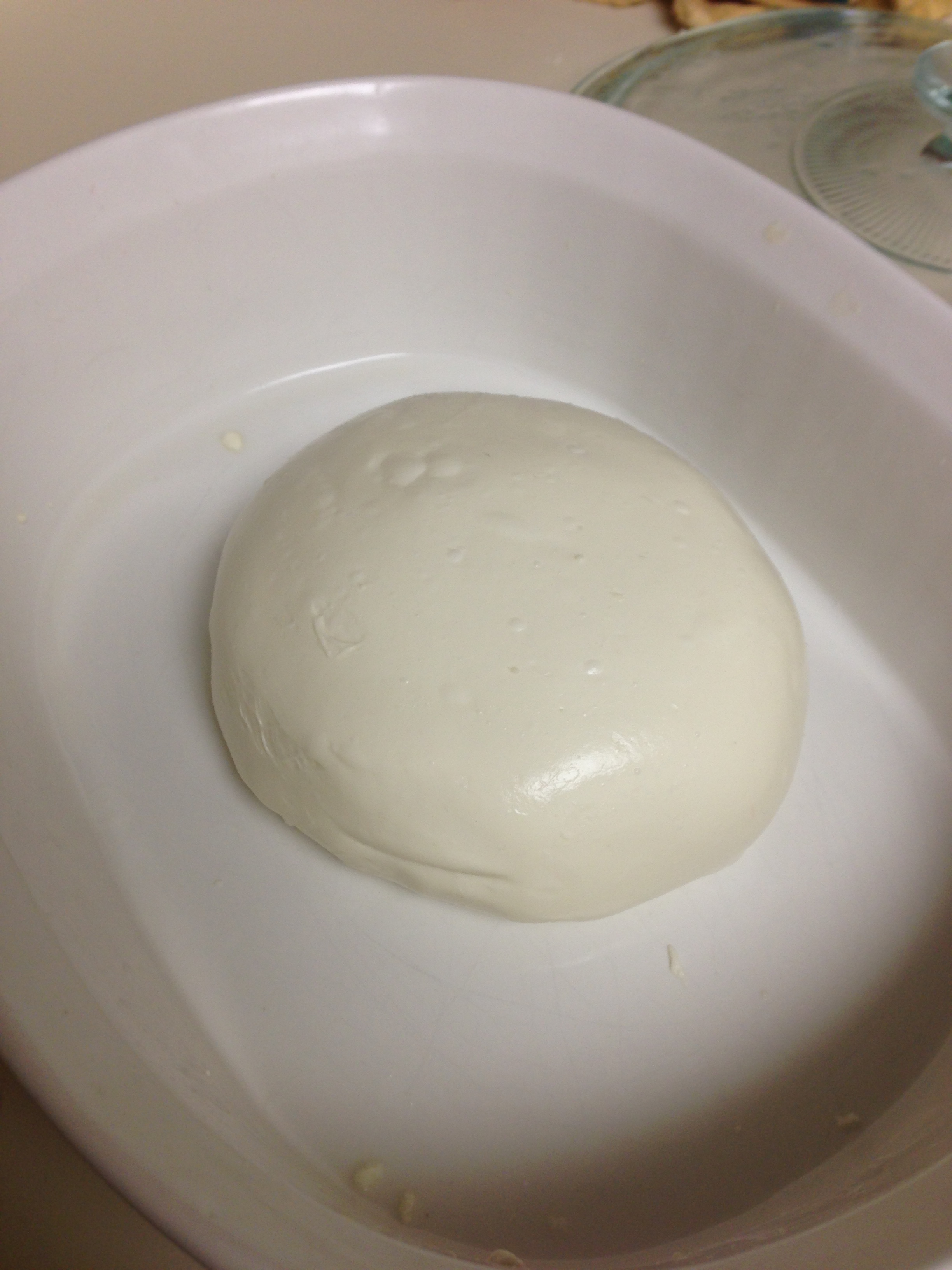
Congrats you made cheese!! Before I made cheese I had a few friends ask me why I would make cheese. I love cheese. It’s in my top #5 favorite foods (pasta, chocolate, strawberries, cheese and I’m not sure about the fifth). I told Ryan and he said, “why make anything?” Today we can go out for every kind of food we want. Why make anything? Because it’s fun. It’s nice to spend time together. It’s fun to experiment and have an adventure. It’s a good chance to be creative. It’s fun to share. Why do you make things?
 Messy Level: Medium. Scooping out the curds leads to whey spillage. Also, all the pouring out of whey, kneading, and folding leads to hands covered in cheese goop. It’s not a crazy mess by any means, but there will be flecks of curds and whey in weird places on the stove, sink, and floor.
Messy Level: Medium. Scooping out the curds leads to whey spillage. Also, all the pouring out of whey, kneading, and folding leads to hands covered in cheese goop. It’s not a crazy mess by any means, but there will be flecks of curds and whey in weird places on the stove, sink, and floor.
The post Make Your Own Mozzarella appeared first on Cooking is Messy.
]]>